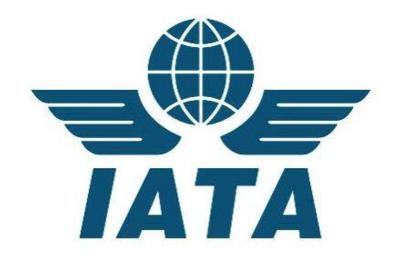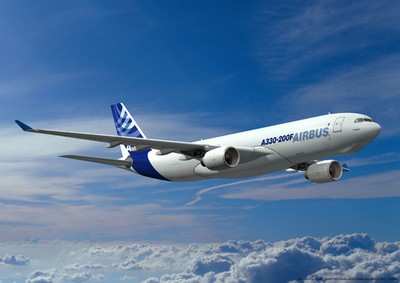Global Net Profit Of $12.9 Billion Expected In 2013
The International Air Transport Association (IATA) has made an upward revision to its industry financial outlook. For 2013 airlines are expected to return a global net profit of $12.9 billion. This is expected to improve to a net profit of $19.7 billion in 2014. Both are improvements on the September forecast which anticipated an industry net profit of $11.7 billion in 2013 increasing to $16.4 billion in 2014.

The upward revision reflects lower jet fuel prices over the forecast period as well as improvements to the industry’s structure and efficiency already visible in quarterly results this year. Passenger markets continue to outperform the cargo business which remains stagnant both on volumes and revenues.
IATA expects 2014 to be a second consecutive year of strengthening profitability (beginning from 2012 when airlines posted a net profit of $7.4 billion). Industry net profit margins, however, remain weak at 1.1% of revenues in 2012, 1.8% in 2013 and 2.6% in 2014. Within this aggregate forecast for the entire industry, performance of individual airlines and regions will vary considerably.
The anticipated $19.7 billion profit in 2014 would come on projected revenues of $743 billion. While this would be the largest absolute profit for the airline industry—outstripping the $19.2 billion net profit that the industry returned in 2010 - it is important to note that 2010 revenues were $579 billion. The net profit margin in 2010 was 3.3%, some 0.7 percentage points higher than the 2.6% expected for 2014.
“Overall, the industry’s fortunes are moving in the right direction. Jet fuel prices remain high, but below their 2012 peak. Passenger demand is expanding in the 5-6% range—in line with the historical trend. Efficiencies gained through mergers and joint ventures are delivering value to both passengers and shareholders. And product innovations are growing ancillary revenues,” said Tony Tyler, IATA’s Director General and CEO.
“We must temper our optimism with an appropriate dose of caution. It’s a tough environment in which to run an airline. Competition is intense and yields are deteriorating. Cargo volumes haven’t grown since 2010 and cargo revenues are back at 2007 levels. The passenger business is expanding more robustly. Some airlines will out-perform our estimates and others will under-perform. But, on average, airlines will only make a net profit of about $5.94 per passenger in 2014,” said Tyler.

IATA outlook forecasts are estimates of the aggregate performance of the global air transport sector and should not be taken as in indicator of individual airline performance which can vary greatly from the global outlook, including variations from its directional shifts.
While passenger demand is robust and passenger numbers are expected to reach 3.1 billion in 2013 and rise by 6% to 3.3 billion in 2014. Nonetheless, competition remains intense and industry-wide average yields are expected to fall by 0.2% in 2013 and by 0.6% in 2014, cargo demand remains largely stagnant. Airlines are expected to carry 51.6 million metric tons of cargo in 2013, increasing to 52.5 million metric ton in 2014. This modest increase in demand is expected to be offset by a decline in yields (-2.1% in 2014). Despite the stagnation in the air cargo industry, belly capacity continues to be introduced as airlines seek to maximize on the robust passenger demand. Cargo revenues are expected to be $60 billion in both 2013 and 2014. While revenues peaked in 2011 at $67 billion, for 2013 and 2014 they are basically unchanged from 2007 levels.
The “on-shoring” of production is having an adverse impact on the cargo business. This is being driven by two forces. Since the recession we have seen a rise in protectionist measures by governments aiming to stimulate domestic economies. In tandem the effects of earlier liberalization are fading as costs rise in previously low labor-cost locations. These conditions are likely to extend over several years.
Airlines have made great strides at improving their businesses in the face of very adverse business conditions. Where they have been able to improve the industry structure through mergers and joint ventures, consumers have benefitted with more efficient connectivity and this has translated to improved financial results.

Fuel consumption provides a good example of the efficiencies that airlines are putting in place. In the face of rapidly rising fuel costs, airlines have dramatically improved fuel efficiency. In 2004 airlines transported two billion passengers and 38 million metric tons of cargo using 65 billion gallons of fuel. In 2014 we expect some 3.3 billion travelers and 52 million metric tons of cargo—increases of 64% and 37% respectively. Over the same period fuel uplift has grown by only 17% to 76 billion gallons.
“Airlines have shown that they can rise to the challenges of a difficult trading environment. That’s good news for economies and consumers that depend on global connectivity. But I am increasingly concerned that governments have not fully appreciated the critical role that aviation plays in our connected world. Regulatory and tax burdens incrementally, but significantly, rise year-on-year. Some governments even appear to be backtracking on deregulation and are micro-managing in areas such as passenger rights,” said Tyler.
“In 2014 we will mark 100 years since the first scheduled commercial air service was inaugurated. Over aviation’s first century, our world has changed for the better in many ways. The industry evolved into a powerful draft horse connecting people and growing economies. Governments should keep this in mind when developing policies or deciding taxes.
Supporting aviation’s enabling capabilities pays big economic dividends,” said Tyler.
(images from file)
 ANN's Daily Aero-Linx (04.16.24)
ANN's Daily Aero-Linx (04.16.24) Aero-News: Quote of the Day (04.16.24)
Aero-News: Quote of the Day (04.16.24) Airborne 04.10.24: SnF24!, A50 Heritage Reveal, HeliCycle!, Montaer MC-01
Airborne 04.10.24: SnF24!, A50 Heritage Reveal, HeliCycle!, Montaer MC-01 Airborne 04.12.24: SnF24!, G100UL Is Here, Holy Micro, Plane Tags
Airborne 04.12.24: SnF24!, G100UL Is Here, Holy Micro, Plane Tags Airborne-Flight Training 04.17.24: Feds Need Controllers, Spirit Delay, Redbird
Airborne-Flight Training 04.17.24: Feds Need Controllers, Spirit Delay, Redbird





